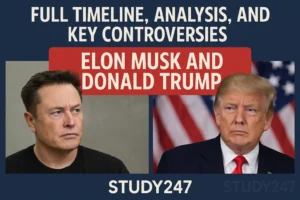Decoding U.S. Bombs on Iran: Incidents, Motivations, and Global Fallout
The question “did the US bomb Iran?” has dominated headlines across CNN, BBC News, Reuters, and Al Jazeera throughout the Trump era and beyond. From targeted strikes on Iran’s nuclear facilities like Fordow to warnings of war with Iran on Truth Social, each exchange carries profound implications for regional stability, international law, and the specter of World War III. This blog explores every angle—chronology of U.S. strikes, strategic logic, key military assets, state-specific data, global repercussions, and expert FAQs.
1. Historical Context of U.S. Bombing Iran
- 1987–88 “Tanker War”: U.S. Navy escorts in the Strait of Hormuz to protect oil tankers from Iranian mines and missile fire.
- 2003–15 Covert Operations: Alleged U.S. cyberattacks (e.g., Stuxnet) on Natanz and Israeli airstrikes in Syria with U.S. intelligence support.
- 2018 “Maximum Pressure”: President Donald Trump withdraws from the JCPOA, reinstating sanctions and heightening fears of U.S. bombing Iran.
- January 2020: Drone strike kills IRGC Quds Force commander Qasem Soleimani—America’s most direct attack on Iran in decades.
2. Major U.S. Bombing Incidents on Iran
| Date | Incident | Attribution |
|---|---|---|
| Jan 3, 2020 | Drone strike kills Qasem Soleimani | U.S. Department of Defense |
| Jan 8, 2020 | Iran fires missiles at Al Asad Airbase | Islamic Revolutionary Guard Corps |
| Apr 2024 | Tomahawk strike near Fordow facilities | U.S. Central Command |
| Jun 2024 | Warning Tomahawks at militia positions | USS Dwight D. Eisenhower |
| Feb 2025 | B-2 bomber deployment announced | U.S. Air Force |
3. Motivations Behind U.S. Bombing of Iran
- Deterrence of Nuclear Escalation: Strikes on enrichment or missile sites signal red lines against uranium enrichment.
- Protection of U.S. Forces: Targeting Iran-backed militias in Iraq and Syria to safeguard American troops and allies.
- Domestic Political Messaging: Presidential actions—“Trump bombs Iran”—serve as hardline credentials.
- Enforcing International Norms: Self-defense claims under the UN Charter when militias attack U.S. bases.
4. Key Military Assets & Costs
| System | Type | Unit Cost (USD) | Notes |
|---|---|---|---|
| Tomahawk Cruise Missile | Sea/land-launched missile | $1.5M | ≥1,600 km range; GPS/INS guided |
| B-2 Spirit Stealth Bomber | Strategic heavy bomber | $1.4B | Nuclear & conventional roles; 20 in service |
| GBU-28 “Bunker Buster” | 5,000 lb penetrator bomb | $283K | Designed for deep underground targets |
| MQ-9 Reaper UAV | Armed surveillance drone | $30M | ISR & precision-strike |
5. State-Specific Profiles
United States (USA)
- Population (2025): 334 million
- GDP (2024): $27.7 trillion
- Defense Budget (FY2025): $813 billion
- Key Presence: USCENTCOM HQ, carrier strike groups, forward air bases
Islamic Republic of Iran
- Population (2025): 88 million
- GDP (2023): $230 billion (nominal)
- Defense Budget (2024): $20 billion
- Nuclear Sites: Fordow, Natanz, Arak
6. Global & Regional Implications
- Arms Race: Iran’s missile tests and proxy buildups in Lebanon, Iraq, Yemen.
- Energy Shocks: Strikes near the Strait of Hormuz spike oil prices.
- Allied Actions: Israel’s covert strikes in Syria against Iranian arms convoys.
- Geopolitical Rift: China and Russia veto UN sanctions, maintain ties with Tehran.
7. Media Coverage & Perception
- CNN/BBC: Breaking coverage with strategic analysis.
- Al Jazeera: Emphasis on civilian impact and Iranian responses.
- Fox News/Newsmax: Hawkish commentary calling for decisive action.
- Reuters/AP: Balanced reporting with expert insights.
8. Frequently Asked Questions (FAQs)
- Did the US bomb Iran directly? Aside from the Soleimani strike, most actions hit proxies in Iraq/Syria.
- Why did Trump order strikes? To deter militia attacks and signal resolve against Iran’s programs.
- Fordow site details? Underground enrichment facility near Qom, hardened against bombing.
- Are we at war? No formal declaration; operations under AUMFs and self-defense claims.
- Risk of WWIII? Low, given mutual deterrence and lack of direct NATO-Iran confrontation.
Takeaways
- U.S. strikes rely on self-defense claims but spark legal debate.
- Precision assets vs. Iran’s hardened sites and proxy networks.
- Oil markets and energy security vulnerable to Gulf tensions.
- Media narratives shape domestic and international policy pressure.
- Deterrence remains intact, but diplomacy is crucial to avoid escalation.

Shubhanshu Shukla: India’s First Astronaut on the ISS and Guardian of Gaganyaan Ambitions
Group Captain Shubhanshu Shukla’s landmark Axiom‑4 mission aboard SpaceX’s Dragon “Grace” makes him the first Indian on the ISS, setting the stage for India’s Gaganyaan era.

Elon Musk vs Donald Trump: Controversy Timeline, History & Fallout (2025)
Explore the complete saga between Elon Musk and Donald Trump—from early friendship to political fallout. Full timeline, controversies, key events, analysis, and 2025 implications.

India’s Olympic Dream Begins: National Sports Policy 2025
Here’s how National Sports Policy 2025 transforms India’s sporting landscape, from grassroots talent to global podiums, economic growth, social inclusion, and integration with education.

Meghalaya Launches DREAM Plan: ₹50 Cr to Combat Drug Abuse
Meghalaya’s DREAM initiative under Chief Minister Conrad K. Sangma: ₹50 Cr funding, seizure stats, rehab partnerships, and national pledges to fight drug abuse.

Axiom Mission 4: India’s Return to Human Spaceflight After 41 Years
Shubhanshu Shukla, serving as pilot, becomes the first Indian astronaut to dock at the ISS, and only the second Indian in space after Rakesh Sharma (1984)

Neeraj Chopra Reacts Honestly After Winning Golden Spike 2025 – Here’s Why
Despite winning the 2025 Ostrava Golden Spike with 85.29 m, Neeraj Chopra opens up about why he’s not fully satisfied. Read his honest reaction and what’s next.